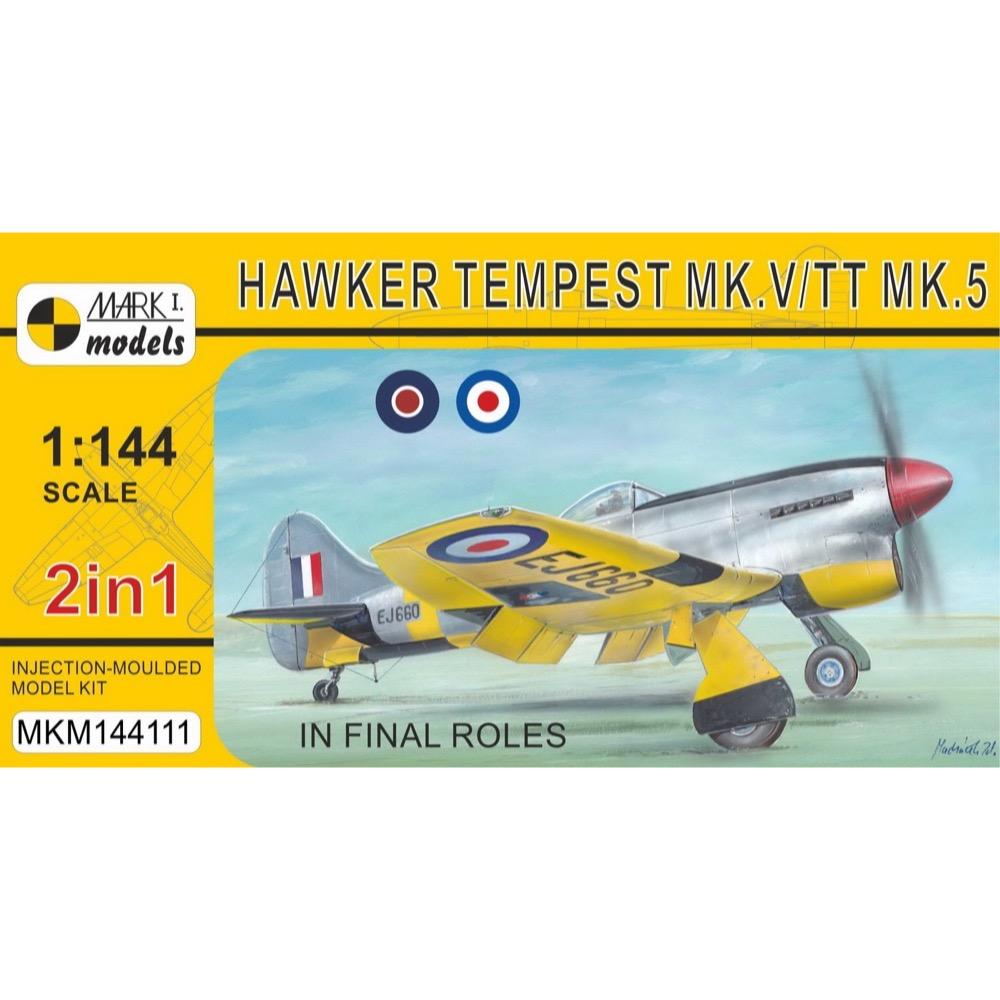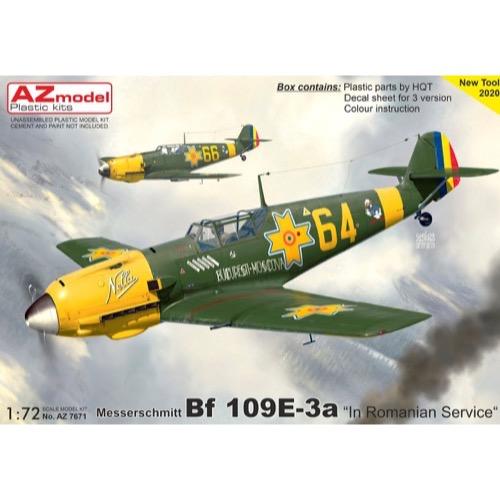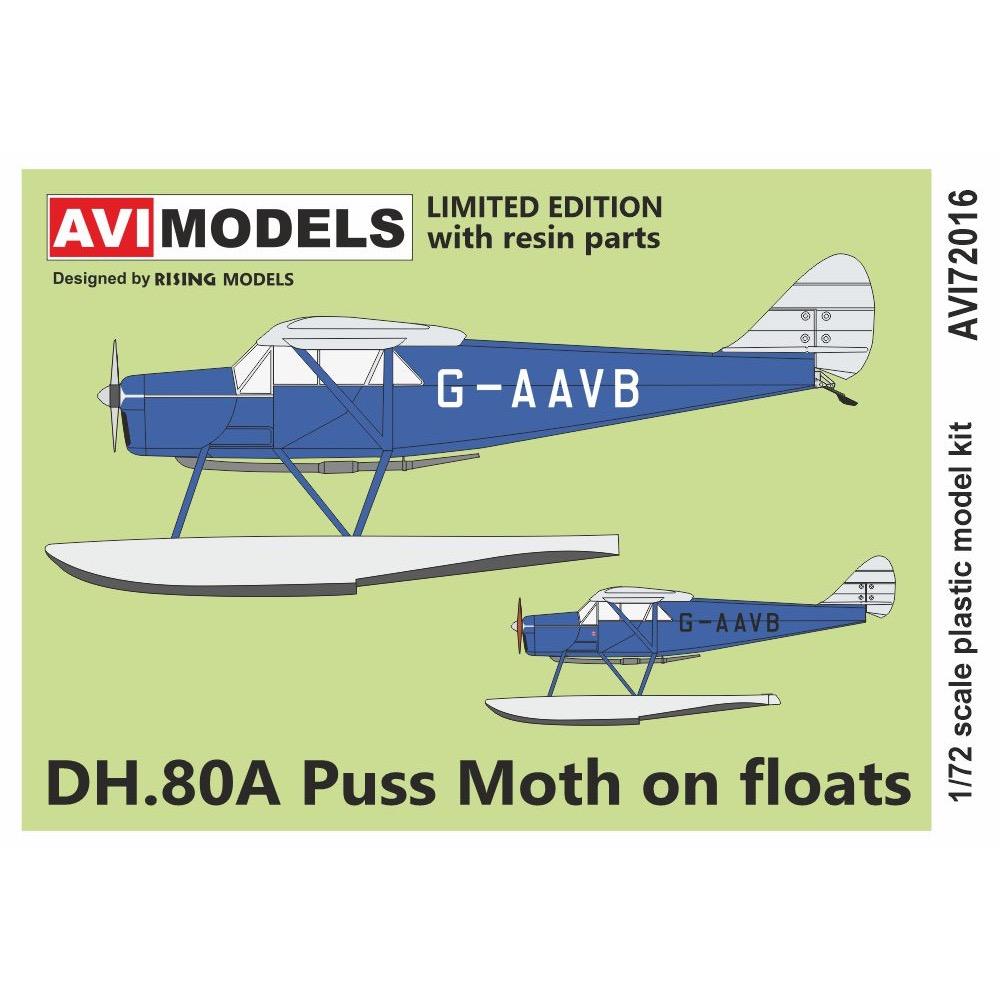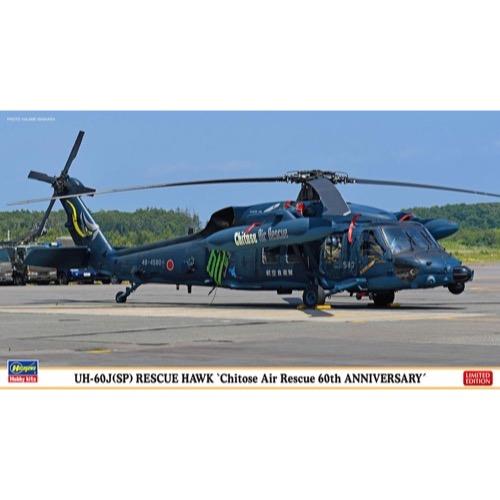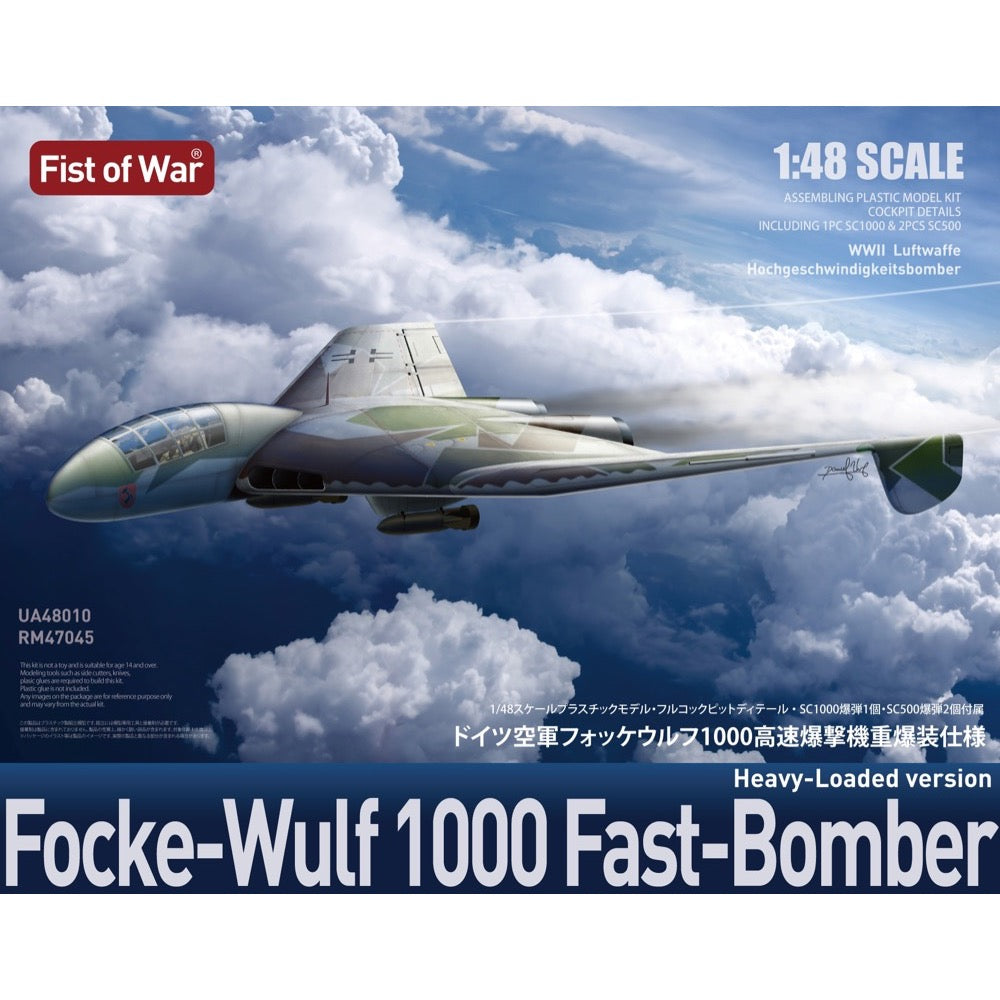
Modelcollect UA48010 1/48 WWII Luftwaffe Focke-Wulf 1000 Fast Bomber
12.00
$
<h3>Focke-Wulf 1000 Fast Bomber</h3>
<p>The Focke-Wulf 1000 (FW1000) is a Luftwaffe high-speed bomber equipped with two Heinkel jet engines. The original name (FW1000x1000x1000) means a bomb weight of 1000 kg, a cruising range of 1000 km, and a maximum speed of 1000 km / h.</p>
<h3>Features</h3>
<ul>
<li>
<p>The German army FW1000 is reproduced with a completely new mold by the original interpretation of the Fist of War.</p>
</li>
<li>
<p>The bomb bay hatch can be opened or closed. Includes SC1000 and SC500 bombs.</p>
</li>
<li>
<p>The basic specifications are parked, but flight conditions can also be assembled. The SC500 bomb is mounted on the pylon under all wings.</p>
</li>
<li>
<p>Each hatch, landing gear, etc. can be selected from the parked state and the flight state.</p>
</li>
<li>
<p>Open / close selection type for air brake, flap angle, etc.</p>
</li>
<li>
<p>The number of parts is small, the tail and fitting are excellent, and assembly is easy.</p>
</li>
<li>
<p>Decals included.</p>
</li>
<li>
<p>This product is an unassembled and unpainted assembly model. The illustration is an image of the product. There may be parts that differ from the actual product.</p>
</li>
</ul>
<p> </p>
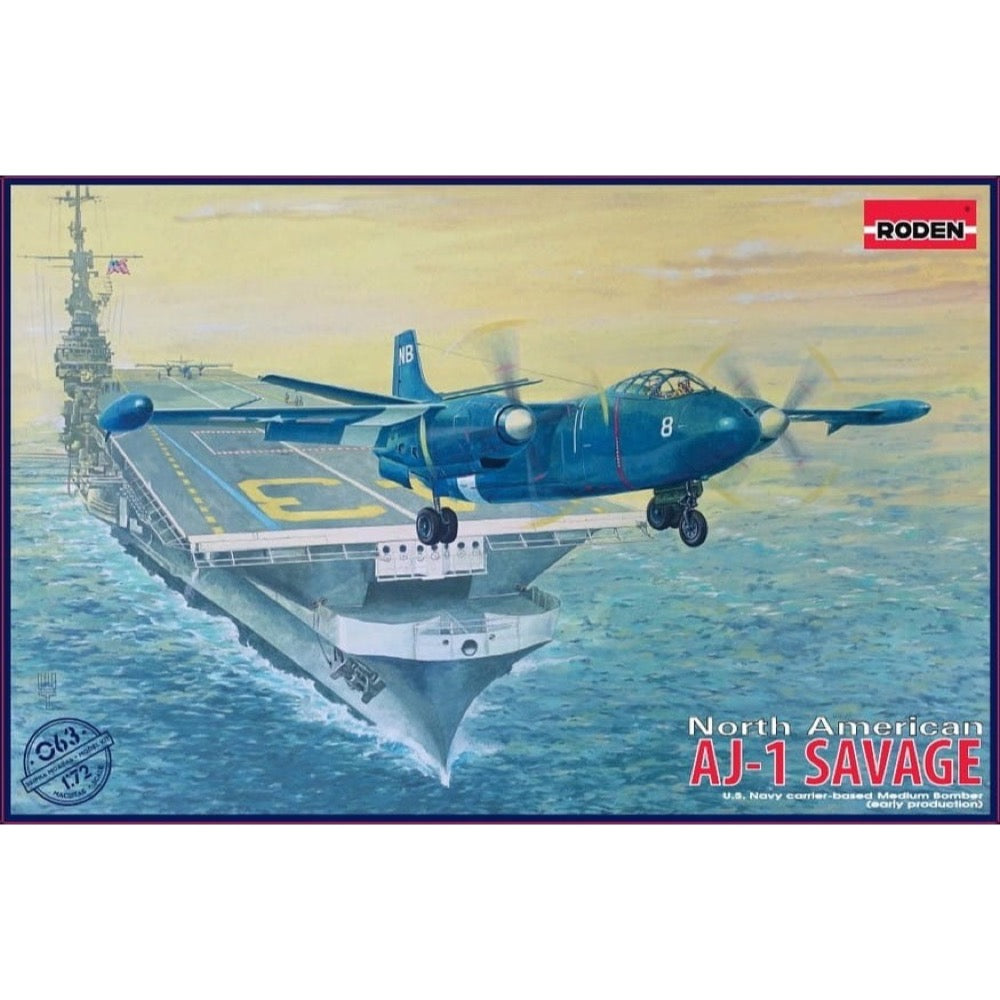
Roden 063 1/72 North American AJ-1 Savage
41.00
$
<p>At the end of World War II, wanting to equip their aircraft carrier strike forces with the new superpower weapon, the atomic bomb, the US Navy formulated a requirement for a new bomber that could take off directly from an aircraft carrier's deck, carrying nuclear weapons.<br><br>At first, this was considered impossible due to the large size of the bomb for a typical carrier aircraft, but in 1947 the Mark 4 bomb appeared, which could potentially fit into the bomb bay of a twin-engined bomber. In the same year, North American, which during World War II produced such well-known aircraft as the B-25 Mitchell bomber, Texan trainer and the most famous American fighter, the Mustang, proposed the concept of a deck-based aircraft with two piston engines, supplemented with a jet engine to accelerate takeoff from the aircraft carrier deck and to improve performance in emergency flight situations.<br>The maximum size of the aircraft would be critical in carrier deck operations, so it had to have not only a wing folding mechanism but also a tailfin which could likewise be folded when moved into the carrier's hangar deck. In addition, it was possible to load not only nuclear but also conventional weapons.<br>On July 3, 1948, the first flight of the prototype took place, now designated the XAJ-1 Savage. The plane turned out to be very large indeed and it became the largest and heaviest aircraft so far to be based on aircraft carriers. The bomber had a three-man crew, and to increase the flight range additional fuel tanks were installed at the ends of the wings.<br><br>The auxiliary jet engine was located in the lower middle part of the fuselage, and the undercarriage was reinforced due to the significant weight of the aircraft and for additional safety when equipped with nuclear weapons. Tests of the aircraft lasted until 1949, after which North American received orders for 140 aircraft in addition to the three prototypes already built. Series production began in 1949, and the first 47 aircraft built received the AJ-1 designation. In the spring of 1950, the first AJ-1 was delivered to the aircraft carrier USS Coral Sea (CV43).<br><br>The first few months of the AJ-1's service on carriers were marked by a number of incidents, mainly during takeoff and landing. The plane was quite tricky to pilot and demanded maximum attention from the crew, and since the standard armament was primarily nuclear weapons, the responsibility of the crew was multiplied. To prevent possible unwanted consequences, the Navy decided to temporarily remove the atomic bombs from the AJ-1 and focus on training flights, while the aircraft were converted to carry conventional TNT bombs. Nuclear weapons as standard were returned to the AJ-1 only in 1952, when the probability of fatal incidents was reduced to an absolute minimum.</p>
<p>At this time, North American had already made a number of changes to the design of the aircraft and began production of the more advanced AJ-2, which gradually began to replace the AJ-1 in aircraft carrier groups. At the same time, it was decided not to retire the AJ-1 from service, but to convert them to a standard that was called AJ-1 (Retrofitted), which was generally similar to the AJ-2.</p>
<p>After the beginning of the Korean conflict, several aircraft carriers equipped with the AJ-1 were sent to the Southeast Asian region, but no decision was made to use nuclear-armed aircraft. The operational service of these aircraft lasted until the mid-1950s, after which they were transferred to ground-based training units or converted into tankers for inflight refueling.</p>
<h3>Specifications</h3>
<ul>
<li>
<p>The kit consists of over 160 parts, includes different payload options and a model of the Mark 4 nuclear bomb too within them.</p>
</li>
<li>
<p>Kit includes decal sheet with three markings (U.S. Navy), two for the USS Coral Sea, dated 1950 and 1952 and one for the USS Kearsarge, dated 1952.</p>
</li>
</ul>
<br> <iframe></iframe>
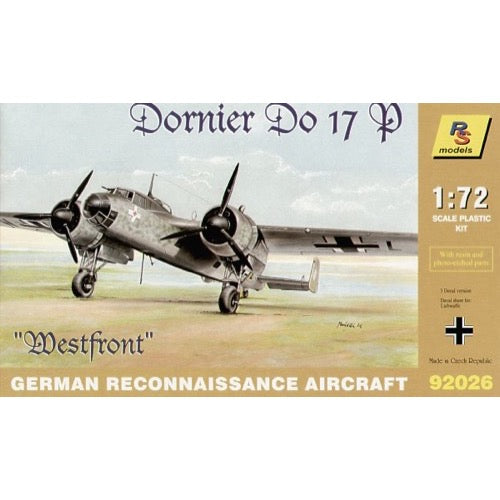
RS Models 92026 1/72 Dornier Do-17P Western front 3 x Luftwaffe
20.00
$
<h3>An all-new tooling of the Dornier 17!</h3>
<p>And in variants not covered by either the Monogram or Airfix kits to boot. While RS Models kits are "limited run," "low-pressure injection" kits, you'd really never know it to look at the parts. Everything is crisply molded and highly detailed. There is a little bit of flash to be cleaned up, certainly, but far less than what we see on releases from some "major" manufacturers. Resin detail parts are included for the cockpit, along with a fret of photo-etch to further detail the cockpit, landing gear and engines.</p>
<p>Decals are for three Luftwaffe reconnaissance P models: 4U+LL of 3(F) Aufkl. Gr. 123, Germany 1939; 4U+EK of 2(F) Aufkl. Gr. 123, crash landed in Belgium in May, 1940; and 4N+HL 3(F) Aufkl. Gr. 22, France 1940.</p>
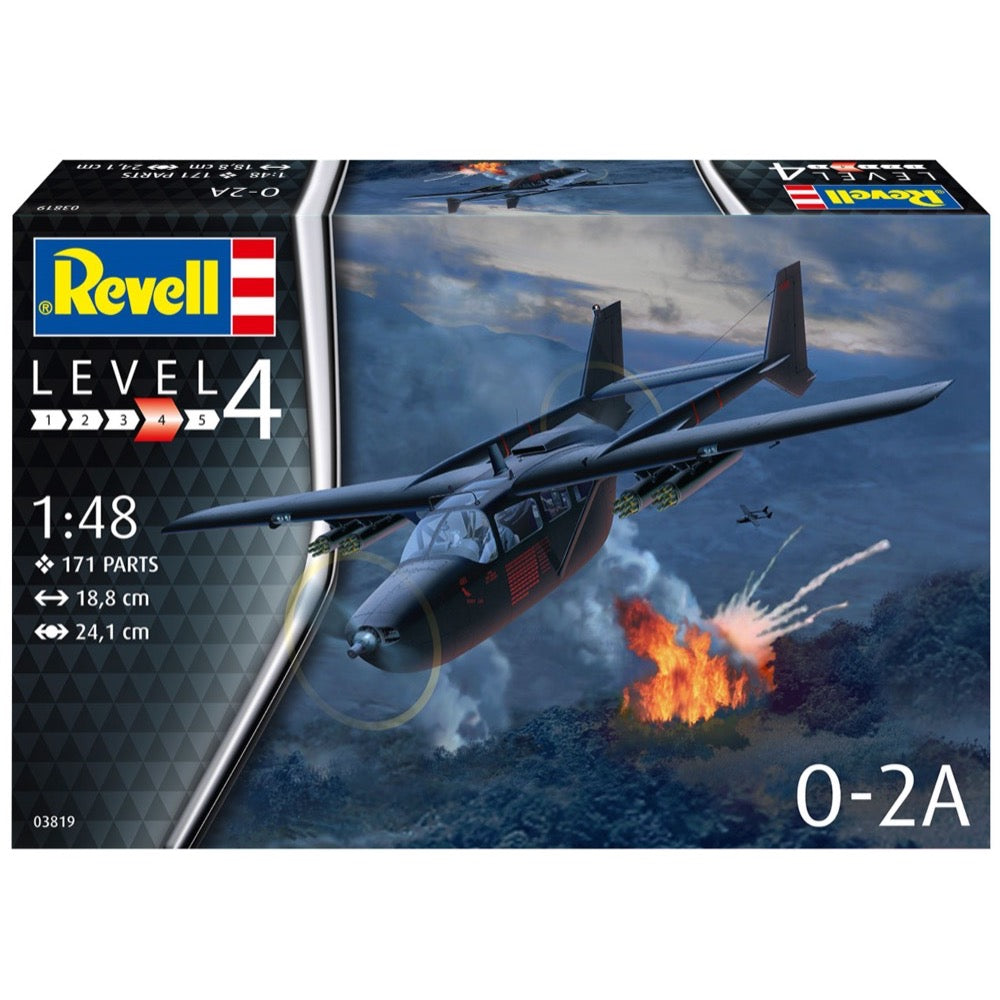
Revell 03819 1/48 O-2A Skymaster
26.00
$
<p>The O-2A is a twin-engine military aircraft. The O-2A's versatility gives it capabilities normally reserved for larger and more expensive aircraft that were not designed primarily as observation aircraft. The full designation of the standard version of this aircraft, of which a total of 501 examples were delivered to the US Air Force and 12 to the Iranian Air Force in the early 1970s, was the O-2A.</p>
<h3>Features</h3>
<ul>
<li>
<p>Very detailed kit</p>
</li>
<li>
<p>Authentic decal</p>
</li>
<li>
<p>Cockpit imitation</p>
</li>
</ul>
<h3>Specifications</h3>
<ul>
<li>
<p>Age recommendation:12+</p>
</li>
<li>
<p>Number of parts:171</p>
</li>
<li>
<p>Length:188mm</p>
</li>
<li>
<p>Span:241mm</p>
</li>
</ul>
<h3>Authentic representation of the following versions</h3>
<ul>
<li>
<p>Cessna O-2A, 23rd Tactical Air Support Squadron, USAF, South Vietnam, 1968</p>
</li>
<li>
<p>Cessna O-2A, N466DF'A21', California Department of Forestry and Fire Protection, 1997</p>
</li>
</ul>
<h3>Scope of delivery</h3>
<ul>
<li>
<p>Plastic model kit (unassembled, illustrated, multilingual building instructions, decals</p>
</li>
</ul>
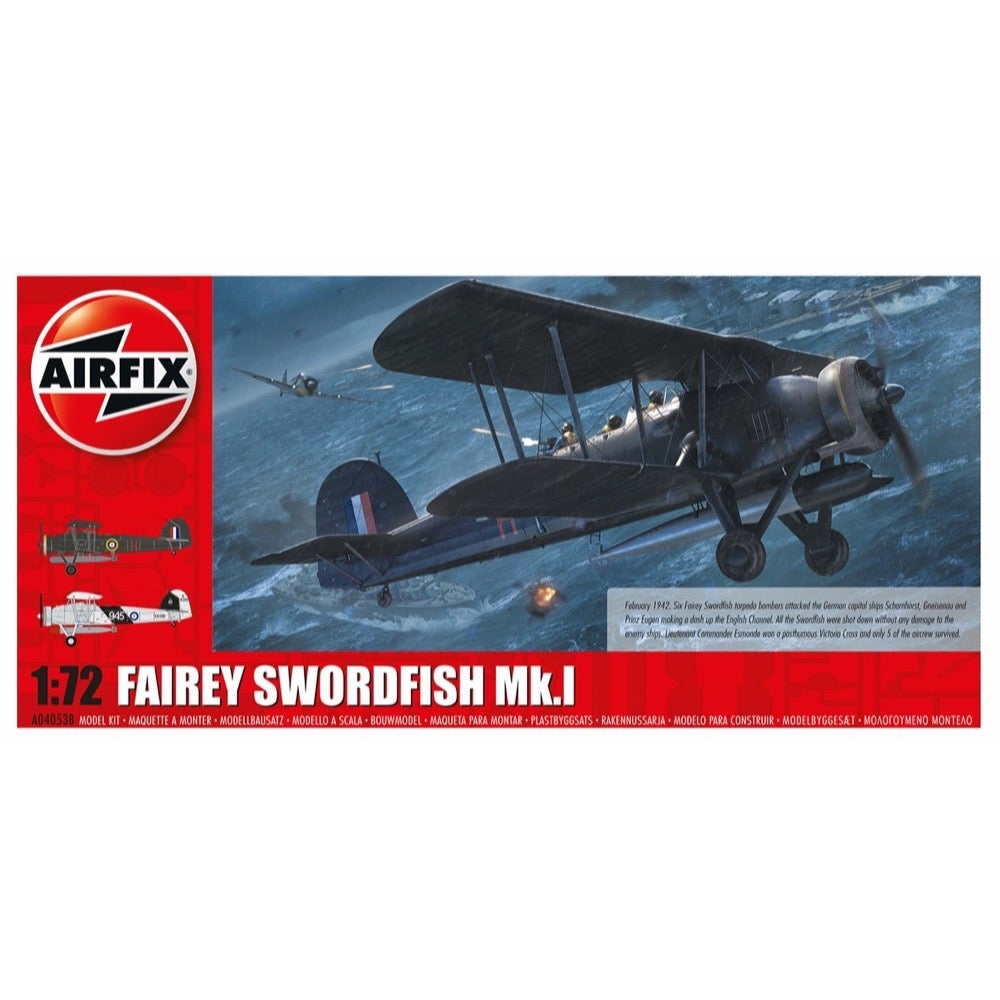
Airfix A04053B 1/72 Fairey Swordfish Mk.I
21.00
$
<h3>Fairey Swordfish Mk.I</h3>
<p>Eighty years ago, six Fairey Swordfish torpedo bombers made their voyage to intercept three German capital ships, while this ‘Channel Dash’ mission was doomed to failure, their heroic legacy lived on. Airfix’s has faithfully recreated one of the six’s Fairey Swordfish Mk.I to commemorate all their efforts</p>
<ul>
<li>1:72 Scale</li>
<li>Wingspan: 19.26 (mm)</li>
<li>Highly Detailed Model</li>
</ul>
<p>Eighty years ago, six Fairey Swordfish torpedo bombers flew from RAF Manston to attack the three German capital ships Scharnhorst, Gneisenau and Prinz Eugen making a dash up the English Channel in February 1942. This heroic attack was doomed to failure and all the Swordfish were shot down without any damage to the enemy ships. Lieutenant Commander Esmonde won a posthumous Victoria Cross and only 5 of the aircrew survived.</p>
<h4>Includes</h4>
<ul>
<li>Sprues</li>
<li>Decals</li>
</ul>
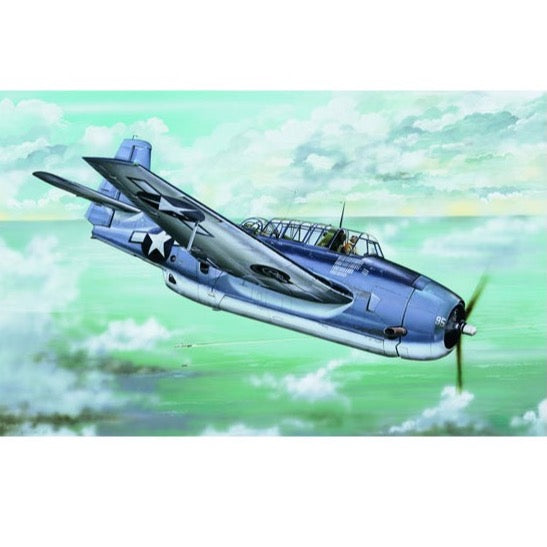
Trumpeter 02233 1/32 TBF-1C Avenger
67.00
$
<p>The Grumman TBF Avenger was introduced to the US Navy in 1942, as a replacement for the Douglas TBD Devastator. It was a large carrier based aircraft powered by a single Wright R2600-8 engine of 1700hp. Its role is a torpedo bomber, and it has a 3-man crew. The Avenger was distinguished by having a power-operated turret just behind the cockpit. The Avenger had a distinguished wartime record from its disastrous debut at Midway, to bombing raids over Tokyo. The TBF-1C was developed to deal with TBF-1’s shortcoming, the .30-calibre cowl gun being deleted in favour of two .50 calibre machine guns mounted in the wings. The other noticeable external change to the TBF-1C was the relocation of the antenna mast a little further aft to the rear of the turnover pylon. Internally, the seat was removed from the second cockpit and replaced with radio equipment. Development of the Avenger continued post-war, with the Fleet Air Arm putting 100 TBM-3Es into service in 1953.</p>
<h3>Features</h3>
<ul>
<li>Full detail Engine</li>
<li>Workable flaps</li>
</ul>
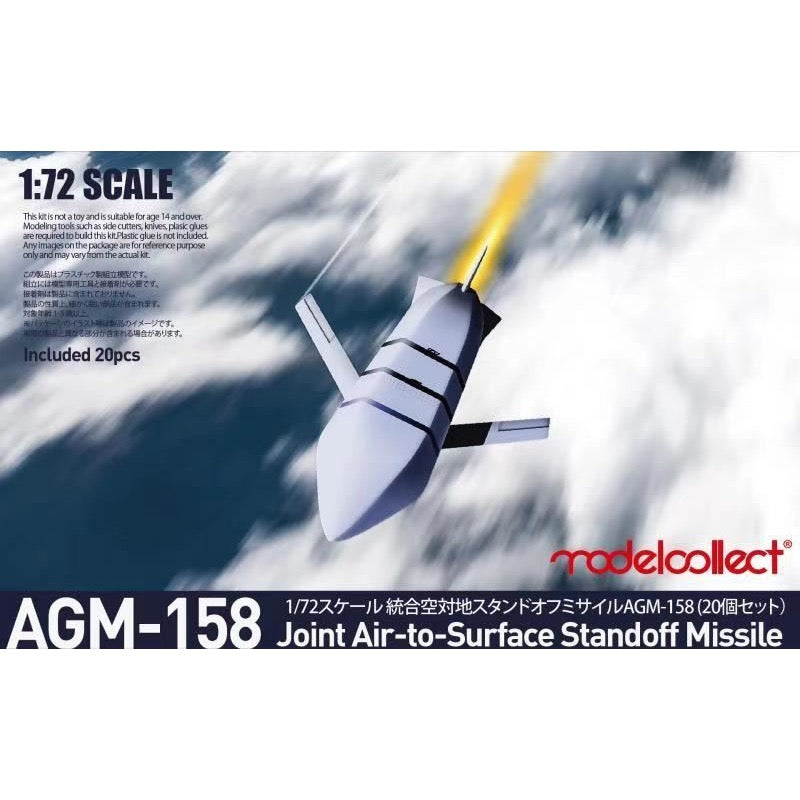
Modelcollect UA72225 U.S. AGM-158 JASSM missile Set
12.00
$
<h3>U.S. AGM-158 JASSM missile Set</h3>
<p>Unassembled plastic model kit in 1/72 scale of a U.S. AGM-158 air to surface cruise missile, with stealth capabilities and a long range.</p>
<p>Kit includes 20 pieces.</p>
<h3>Specification</h3>
<ul>
<li>Scale: 1/72</li>
<li>Item Size: 26.5 x 16.5 x 5 cm</li>
<li>Weight: 202g</li>
</ul>



